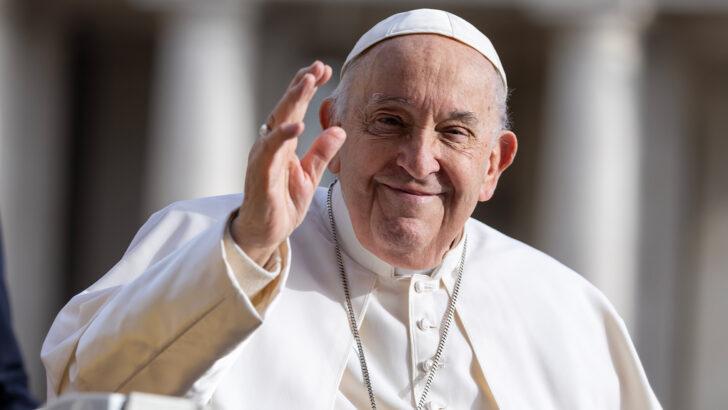Letter from Rome
Matthew Santucci
In the 2024 edition of the “Annuario Pontificio”, or Pontifical Yearbook, released last week, Pope Francis reinstated the ancient, honorary pontifical title of “Patriarch of the West”, reversing Pope Benedict XVI’s 2006 decision to suspend the title.
This honorific designation has reappeared among the list of “historical titles” used to designate the theological and temporal reality of the pontifical office. Those include Vicar of Jesus Christ, Successor of the Prince of the Apostles, Supreme Pontiff of the Universal Church, and Metropolitan Archbishop of the Province of Rome, among others.
Following Pope Benedict XVI’s decision to drop the title in 2006, the Dicastery for Promoting Christian Unity (then the Pontifical Council for Promoting Christian Unity) issued a statement noting that it had become “obsolete” and “no longer usable”.
The dicastery argued that the cultural and geographic understanding of the West had expanded from Western Europe to also cover North America, Australia, and New Zealand.
“The renunciation of this title is intended to express historical and theological realism and, at the same time, to be the renunciation of a claim, a renunciation that could be of benefit to ecumenical dialogue,” the dicastery said at the time.
The decision would run the risk of being ‘mainly speculative’ and ‘not grounded in a serious understanding of ecclesial administration’”
The title “Patriarch of the West” was adopted in the year 642 by Pope Theodore and was used for centuries, though it was not until 1863, during the pontificate of Pope Pius IX, that the title first appeared in the Annuario Pontificio.
Aristomenis ‘Menios’ Papadimitriou, a historian of religion at Fordham University specialising in modern Christianity, told CNA via email that any attempt to read into the decision would run the risk of being “mainly speculative” and “not grounded in a serious understanding of ecclesial administration”.
Patriarch
But Papadimitriou noted that “at the heart of it lies the question of the historic and contemporary meaning of the episcopal honorific of ‘patriarch’ and [the life] of that term through the vicissitudes of history”.
Neither the dicastery nor the Holy See Press Office has released a statement explaining Pope Francis’ decision to reinstate the title.
This is not the first time Pope Francis has made changes to the papal titles in the Annuario Pontificio, the more-than-2,400-page long official directory of the Catholic Church’s global leadership and structure.
The honorifics were previously published above the volume’s short papal biography, but as of 2020 they are listed below that biography in smaller font and identified as ‘Historical Titles’. According to Matteo Bruni, the director of the Holy See Press Office, the 2020 decision was “intended to indicate the link with the history of the Pope” rather than “historicising” the titles themselves.
The pope’s decision to reintroduce the honorific of Patriarch of the West ‘is part of the rediscovery of confraternity’”
That same year, Cardinal Gerhard Mueller, the Vatican’s former doctrinal chief, rebuffed the move, calling it an act of “theological barbarism”.
He argued that the revised yearbook mixed the term “Vicar of Christ” with designations that “have nothing to do with primacy and have only grown historically but [have] no dogmatic meaning, such as ‘Sovereign of Vatican City State’”.
Nikos Tzoitis, an analyst in the press office of the Ecumenical Patriarchate of Constantinople and former spokesperson for Ecumenical Patriarch Bartholomew I, argued in an April 6 article that the pope’s decision to reintroduce the honorific of Patriarch of the West “is part of the rediscovery of confraternity”.
Importance
“In this way, he wants to emphasise the importance of the lost synodality in the Lord’s Church, which expresses his Body and has synodality as a tool,” Mr Tzoitis wrote.
Pope Francis has cemented ecumenical dialogue as one of the main priorities of his pontificate.
In 2014 Francis, during an apostolic visit to the Holy Land, met with Ecumenical Patriarch Bartholomew I on the occasion of the 50th anniversary of the historic meeting between Pope Paul VI and Orthodox Ecumenical Patriarch Athenagoras I of Constantinople on the Mount of Olives in Jerusalem in 1964.
That was the first formal meeting of a pope and ecumenical patriarch since 1438, marking a paradigm shift in the ecumenical relations between the Catholic and Eastern Orthodox Churches.
“We need to believe that, just as the stone before the tomb was cast aside, so too every obstacle to our full communion will also be removed,” Pope Francis said during his 2014 address with the Ecumenical Patriarch.
Matthew Santucci is a CNA Rome correspondent based in EWTN’s Vatican bureau.


 Pope Francis waves as he rides in the popemobile around St Peter’s Square at the Vatican before his weekly general audience April 10, 2024. Photo: CNS/Pablo Esparza
Pope Francis waves as he rides in the popemobile around St Peter’s Square at the Vatican before his weekly general audience April 10, 2024. Photo: CNS/Pablo Esparza 